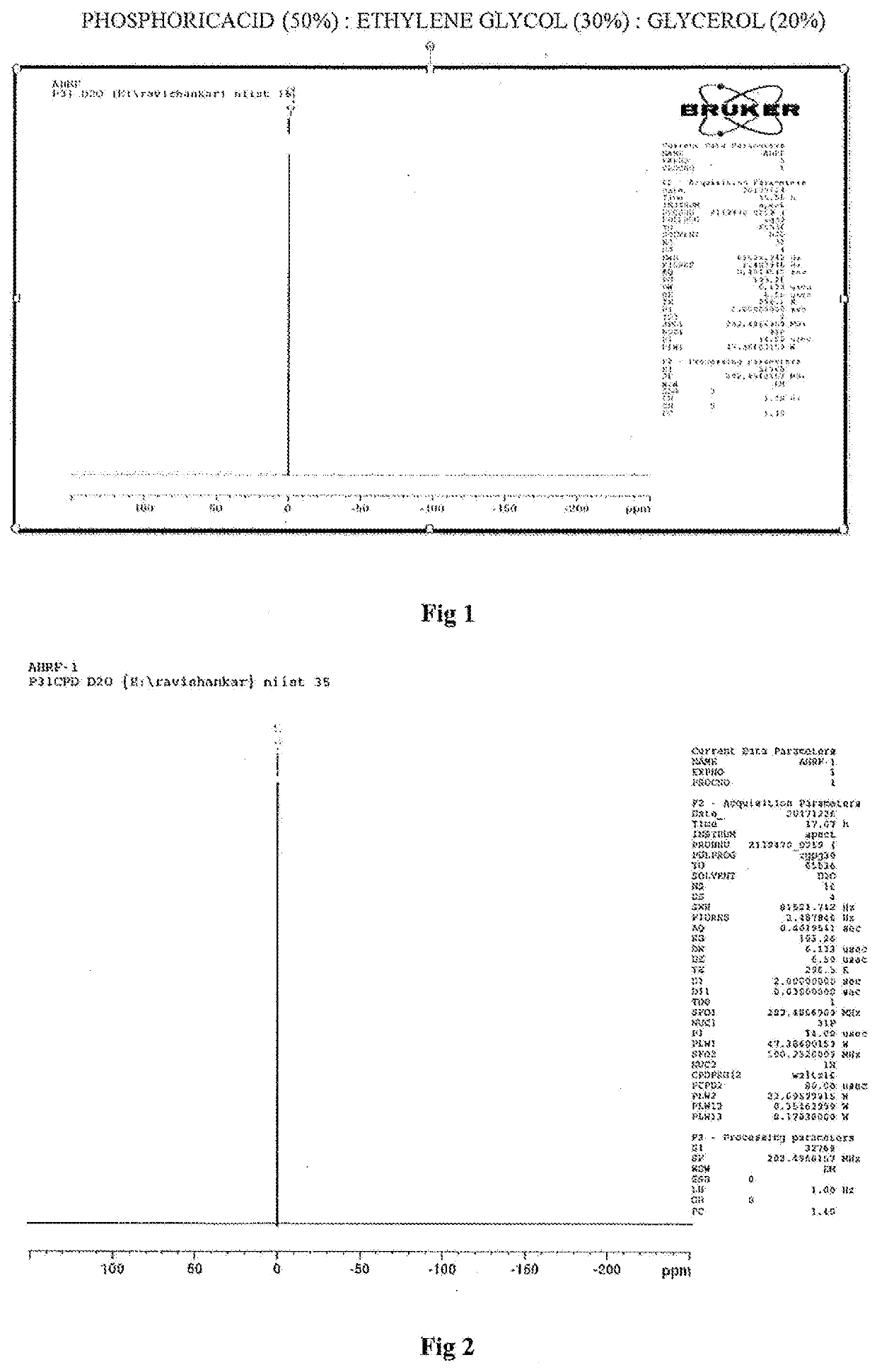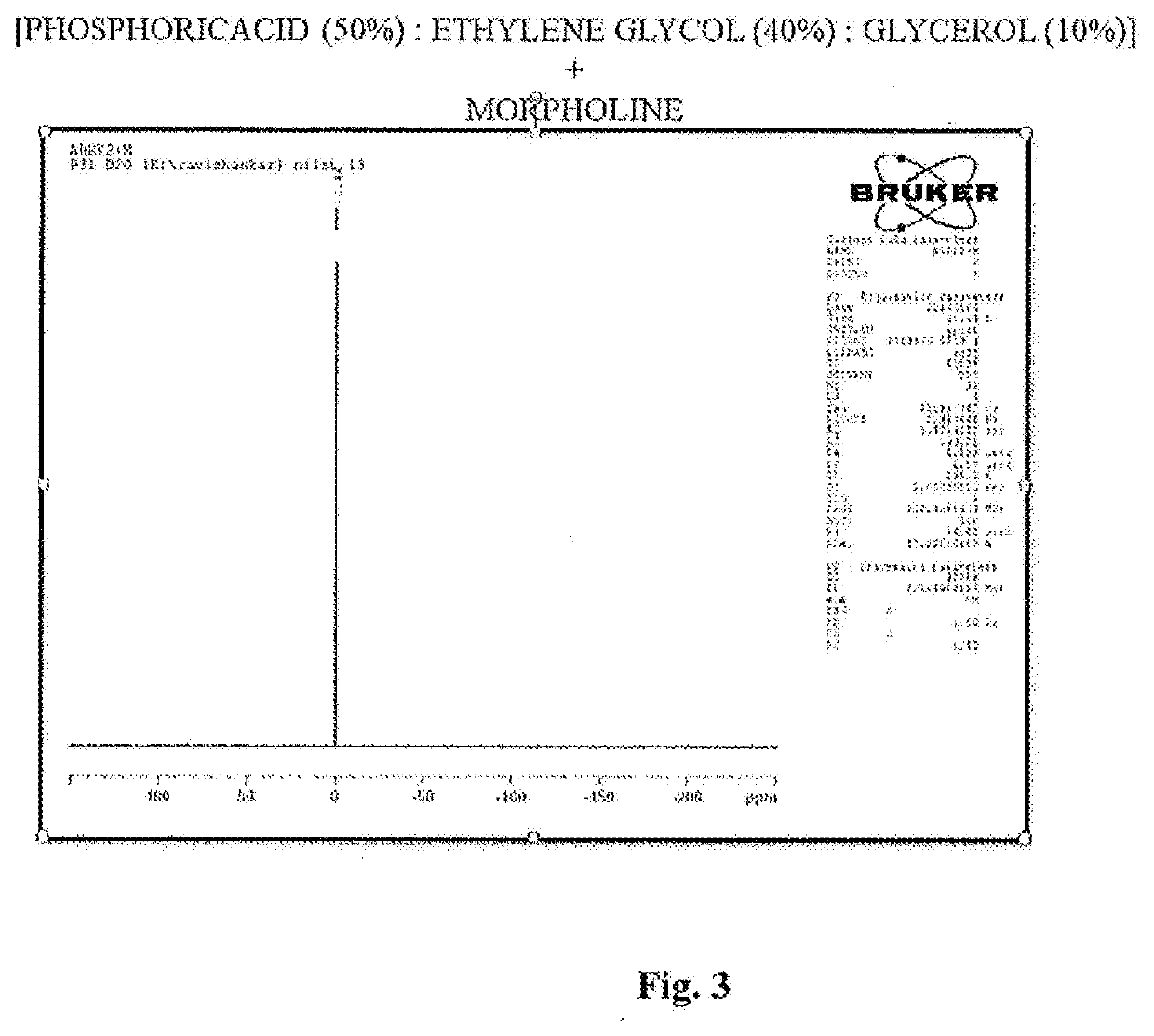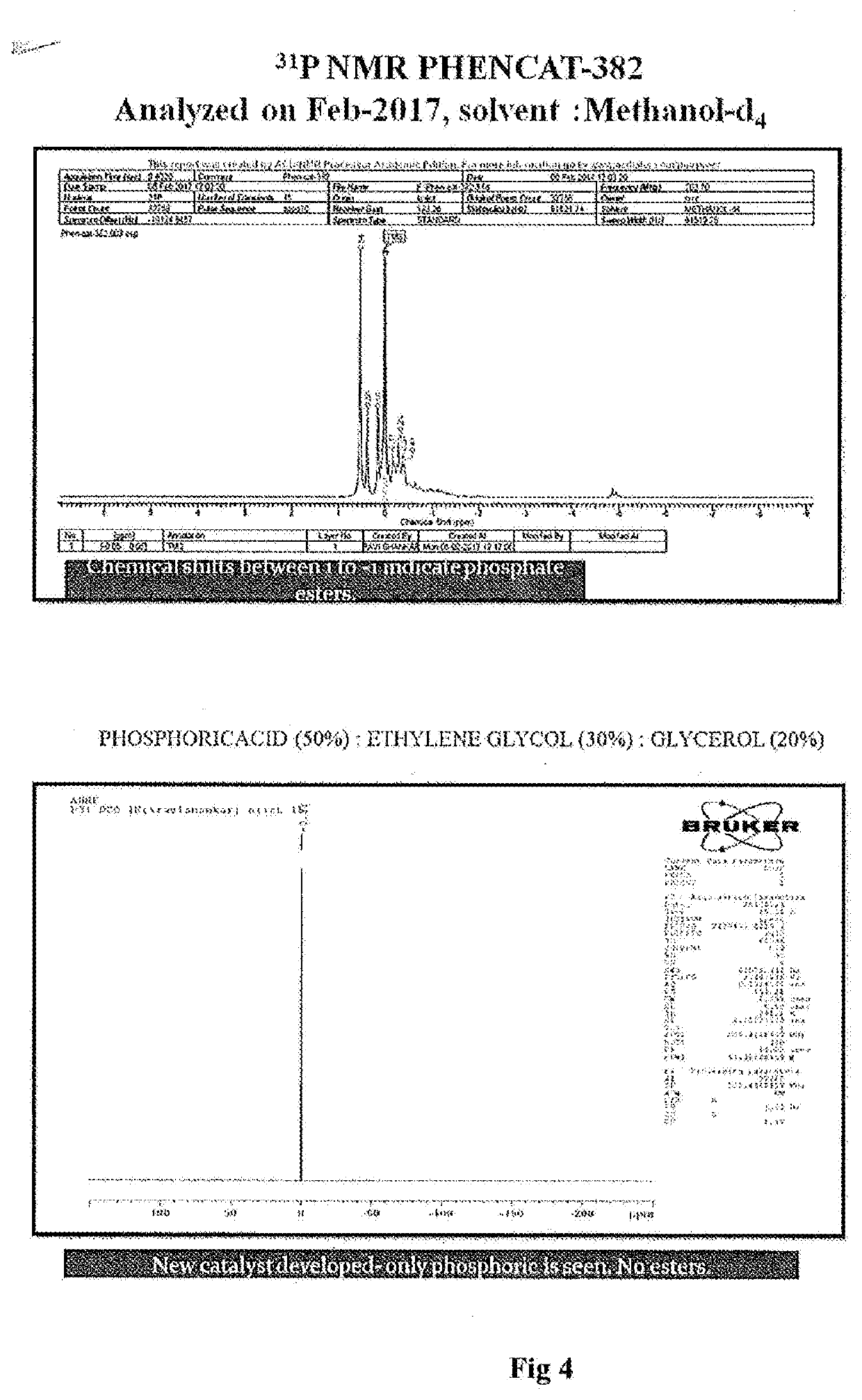Catalyst system for curing phenolic resole resins
a catalyst and resin technology, applied in the field of catalyst systems, can solve the problems of short work life of the resole catalyst, inability to use the mix for any industrial application, and formation of the resole, and achieve the effect of improving work li
- Summary
- Abstract
- Description
- Claims
- Application Information
AI Technical Summary
Benefits of technology
Problems solved by technology
Method used
Image
Examples
example 1
[0060]A resole resin (AHRF-2794-83) was synthesized from the following ingredients and possessed the following properties:
TABLE 1Resole 1IngredientAmountPhosphoric acid1500gEthylene glycol900gGlycerol600g
[0061]Procedure: 1500 g of phosphoric acid (85%) was added to the mixture of ethylene glycol (900 g) and glycerol (600 g). The mixture was cooled using ice water bath.
[0062]200 g of resin (please specify the resin) was mixed with 16 g of the catalyst prepared above to give the following results:
Gel Time30 minTotal curing32 min
example 2
[0063]A resole resin (AHRF-2794-83 A) was synthesized from the following ingredients and possessed the following properties:
TABLE 2Resole 1IngredientAmountPhosphoric acid1500gEthylene glycol900gGlycerol600gMorpholine120
[0064]1500 g of phosphoric acid (85%) was added to the mixture of ethyelene glycol (900 g) and glycerol (600 g). The mixture was cooled using ice water bath. Then 150 g of morpholine was added and cooled.
[0065]200 g of resin (please specify the resin) was mixed with 16 g of the catalyst prepared above to give the following results:
Gel Time52 minTotal curing55 min
example 3
[0066]A resole resin (AHRF-2794-85) was synthesized from the following ingredients and possessed the following properties:
TABLE 3Resole 1IngredientAmountPhosphoric acid50gEthylene glycol30gGlycerol20gMorpholine1.25g
[0067]Procedure: 50 g of phosphoric acid was added to the mixture of ethyelene glycol (30 g) and glycerol (20 g). 1.25 g of morpholine was added to it. The mixture was cooled using ice water bath.
[0068]200 g of resin (please specify the resin) was mixed with 16 g of the catalyst prepared above to give the following results:
Gel Time1 hour 6 minutes Total curing1 hour 18 minutes
PUM
| Property | Measurement | Unit |
|---|---|---|
| temperatures | aaaaa | aaaaa |
| temperatures | aaaaa | aaaaa |
| temperature | aaaaa | aaaaa |
Abstract
Description
Claims
Application Information
 Login to View More
Login to View More - R&D
- Intellectual Property
- Life Sciences
- Materials
- Tech Scout
- Unparalleled Data Quality
- Higher Quality Content
- 60% Fewer Hallucinations
Browse by: Latest US Patents, China's latest patents, Technical Efficacy Thesaurus, Application Domain, Technology Topic, Popular Technical Reports.
© 2025 PatSnap. All rights reserved.Legal|Privacy policy|Modern Slavery Act Transparency Statement|Sitemap|About US| Contact US: help@patsnap.com



